English muffins are simple pan or skillet baked leavened bread. Popular for breakfast and used in classic dishes like eggs Benedict.
The crumb of English muffins is famously referred to as nooks and crannies.
This soft honeycomb-like texture makes the perfect breakfast toast and can be topped with savoury fillings like creamed spinach, guacamole and cured salmon gravlax.
Alternatively, top with homemade clotted cream and strawberry jam just like you would with British scones or simply with butter and homemade orange marmalade.
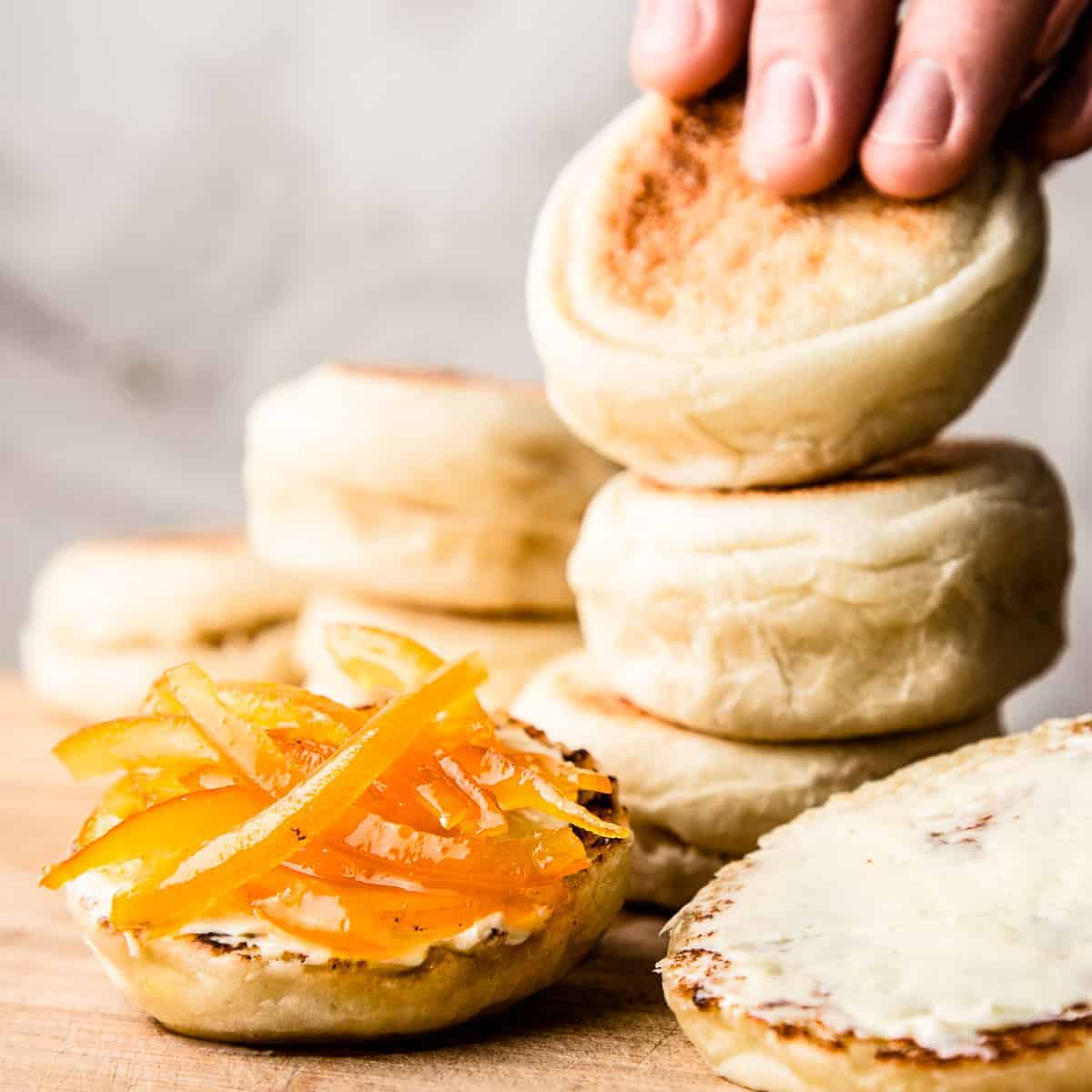
Jump to:
Ingredients
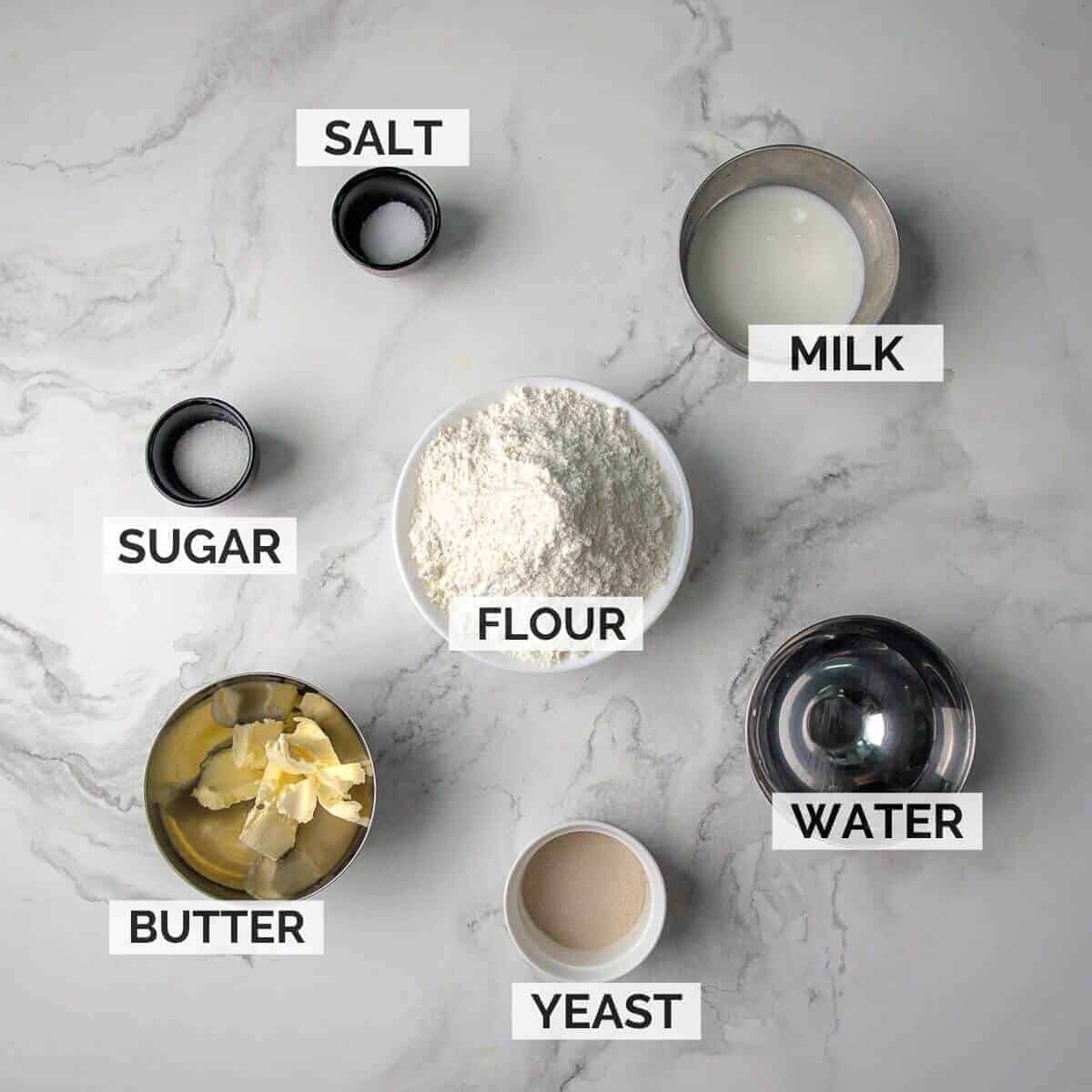
- Flour - All-purpose and white bread flour is most suitable.
- Yeast - Dried active yeast, fresh yeast, or you can use a sourdough starter instead. Simply omit the instant or fresh yeast and add 50 grams active starter.
- Fat - Butter is the fat of choice although, lard or vegan alternatives can also be used. It can also be made without the fat completely.
- Liquid - A combination of milk and water, or simply either or.
Instructions
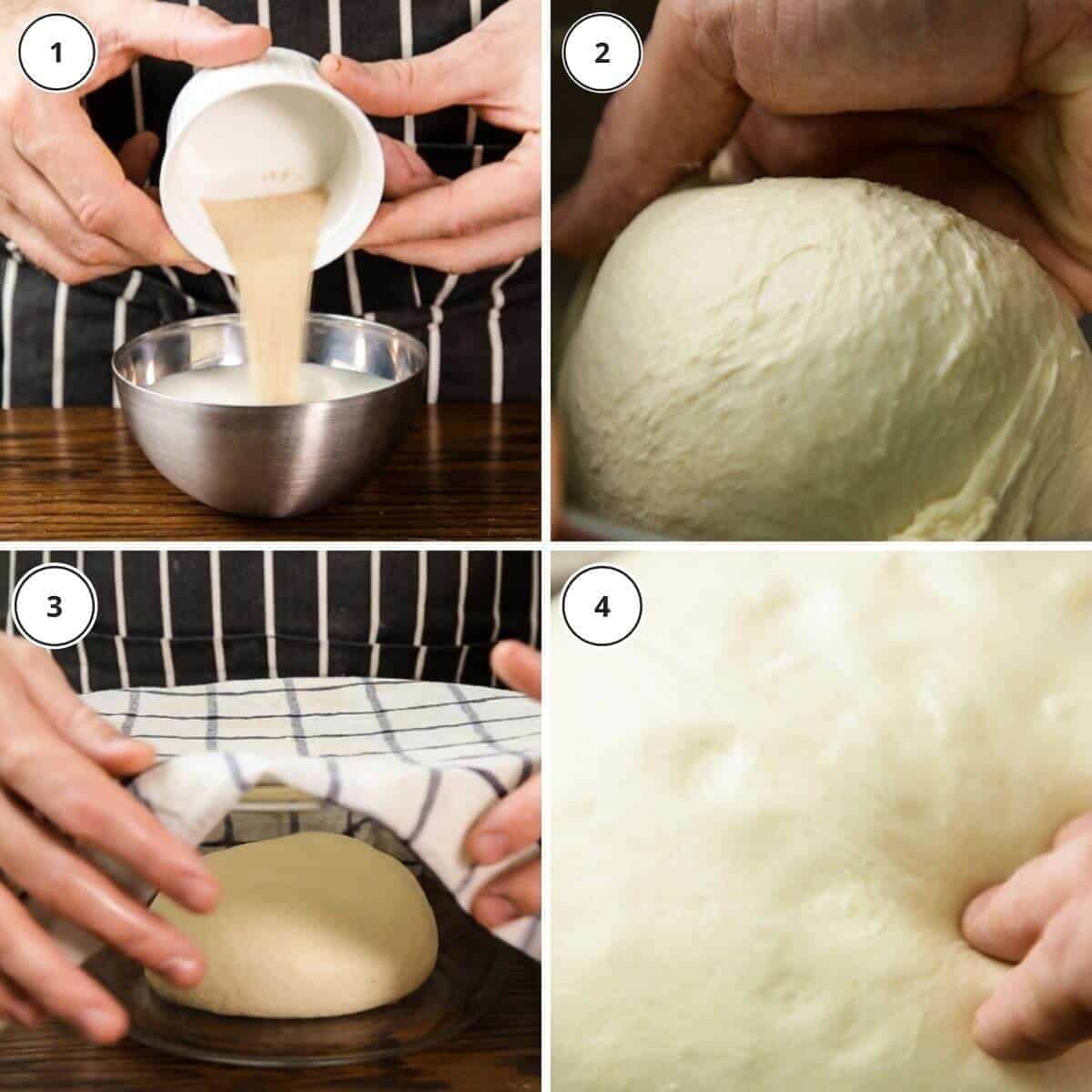
- Combine the milk, water, salt and sugar then warm it to body temperature. 37° C or 98° F to be more precise.
- Add the yeast and let it bloom (activate) for 10 minutes.
- Add the flour to a stand mixer fitted with a dough hook attachment, followed by the warm yeasty liquid.
- Mix this on medium speed until well combined. It should take about 5 to minutes to get a smooth dough.
- Add the room temperature butter in small pieces and keep mixing for another 5 minutes until fully incorporated and the dough is smooth and elastic.

- Shape the dough into a smooth round ball. Cover with a damp towel or plastic wrap, and let it proof for 2 hours at room temperature, or until doubled in size.
- Prepare a tray rubbed with neutral oil or sprayed with cooking spray. Sprinkle with semolina.
- Deflate the dough and divide it into 40 gram or 16 equal pieces.
- Roll the pieces into roughly round shapes and rest under a damp tea towel or plastic wrap for 10 minutes to relax the gluten.
- Shape the muffins into round, tight and smooth, dough balls. Place onto the semolina sprinkled tray you prepared earlier. Cover with another tray turned upside down and let it prove in a warm place until jiggly and fully risen.
- Heat a skillet or non-stick pan on low heat. Do not add oil. Keep the pan dry.
- Carefully cook the muffins 3-4 minutes on each side until golden brown and cooked through. A toothpick inserted to the centre should come out clean.
- Once cooked, let them cool down slightly on a wire rack before serving or storing.
Video
Tips for success
- Dough - Make sure the dough is not too dry. Flours and relative humidity all play a role in dough hydration. If it feels a bit dry, add more water until you have a smooth, non-sticky yet soft dough.
- Cooking - Only cook your English muffins when they are fully proved. Take special care when placing into the skillet and flipping. You don't want to knock the air out.
- Serving - Always serve them toasted and warm. The best way is toasted in a pan with butter, but a toaster will do just fine.
Variations
- Sourdough English muffins - Omit the yeast and replace with 15% or 52 grams of active sourdough starter. The fermentation will of course take longer, but the results are great.
- Wholemeal - Replace 10% or 35 grams of the regular flour with wholemeal flour. Add an extra 25 grams or millilitres of milk.
- Dairy free and vegan - Replace the milk with water and replace the butter with a non-dairy fat like shortening. Alternatively, simply leave out the fat completely.
Serving suggestions
Poke the muffins with a fork on the sides to split in half instead of cutting with a knife for the most traditional result. Toast in butter and serve with either sweet or savoury toppings.
Savoury toppings
- Cream cheese and salmon gravlax.
- Pea, mint and feta dip.
- Moroccan eggplant zaalouk.
- Thinly sliced Roast beef
- Eggs Benedict(ham), Florentine(spinach), or Royal(salmon). All served with poached eggs and hollandaise sauce.
Sweet toppings
- Butter and orange marmalade.
- Clotted cream and strawberry jam.
- Any nut butter with a fruit compote or jam.
- Nutella chocolate spread or homemade versions of it.
Storage instructions
Once cooled you can store it airtight at room temperature for 24 hours or for best results freeze it to keep fresh for longer.
Avoid storing homemade bread in the fridge as it goes stale quicker.
Frequently asked questions
Splitting the muffins with a fork keeps the nooks and crannies crumb structure. If you cut it with a knife, the structure is ruined.
No, Crumpets are made with a runny batter about twice thicker than American pancake batter. Muffins are made from bread dough which is simply cooked in a pan.
The structure and textures are completely different too. Crumpets have a denser texture but with lots of holes penetrating from top to bottom. Muffins have a crumb structure.
English muffins can be baked in the oven, although it's not the traditional way of cooking it.
If you have trouble cooking it in a pan you can colour it on the stove then finish baking it in the oven at 180° C or 356° F for 10 minutes.
Like any yeasted bread, it's best eaten within a day of making it. As mentioned before, the preferred storage method would be to freeze it.
Make sure it's wrapped airtight, and it will keep for many months in the freezer.
Useful equipment

Cooling Racks
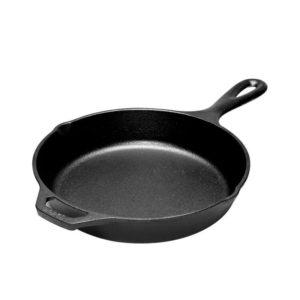
Cast Iron Skillet

Baking Sheets
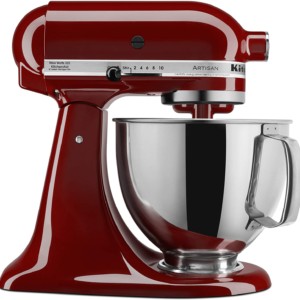
Kitchenaid Stand Mixer
Related recipes
This site contains affiliate links. I may earn a tiny commission on qualifying purchases at no extra cost to you. By bookmarking these links you help support the upkeep of this site.
If you found this post helpful or have learned something, comment, subscribe, and follow me on social platforms for more tasty recipes.
Recipe
Easy Authentic English Muffins (Video)
Equipment
Ingredients
- 350 grams (2 ⅘ cups) Flour - All-purpose or white bread flour (note 1).
- 120 grams (½ cups) Milk
- 120 grams (½ cups) Water
- 6 grams (1 ½ tablespoon) Dry active yeast - Note 2.
- 12 grams (3 teaspoon) Sugar
- 6 grams (1 teaspoon) Salt
- 50 grams (⅕ cups) Butter - Room temperature.
- 10 grams (⅔ tablespoon) Semolina - Only for dusting.
Instructions
- Combine the milk, water, salt and sugar then warm it to body temperature. 37° C or 98° F to be more precise.
- Add the yeast and let it bloom (activate) for 10 minutes.
- Add the flour to a stand mixer fitted with a dough hook attachment, followed by the warm yeasty liquid.
- Mix this on medium speed until well combined. It should take about 5 to minutes to get a smooth dough.
- Add the room temperature butter in small pieces and keep mixing for another 5 minutes until fully incorporated and the dough is smooth and elastic.
- Shape the dough into a smooth round ball. Cover with a damp towel or plastic wrap, and let it proof for 2 hours at room temperature, or until doubled in size.
- Prepare a tray rubbed with neutral oil or sprayed with cooking spray. Sprinkle with semolina.
- Deflate the dough and divide it into 40 gram or 16 equal pieces.
- Roll the pieces into roughly round shapes and rest under a damp tea towel or plastic wrap for 10 minutes to relax the gluten.
- Shape the muffins into round, tight and smooth, dough balls. Place onto the semolina sprinkled tray you prepared earlier. Cover with another tray turned upside down and let it prove in a warm place until jiggly and fully risen.
- Heat a skillet or non-stick pan on low heat. Do not add oil. Keep the pan dry.
- Carefully cook the muffins 3-4 minutes on each side until golden brown and cooked through. A toothpick inserted to the centre should come out clean.
- Once cooked, let them cool down slightly on a wire rack before serving or storing.
Video
Notes
- Flour - All-purpose and white bread flour is most suitable, but a small amount of wholemeal or other flours can be substituted. No more than 10%.
- Yeast - If using fresh yeast, double the amount. Can also be made with sourdough starter by using 15% or 52 grams of active starter. Fermentation will take much longer than with fresh or instant yeast.

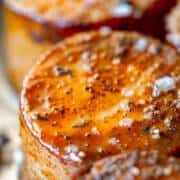



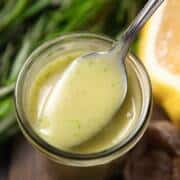
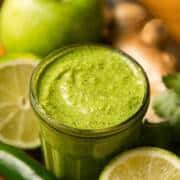
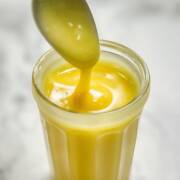
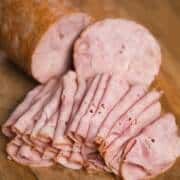
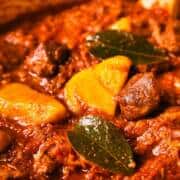
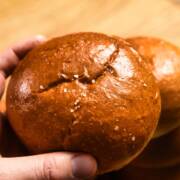
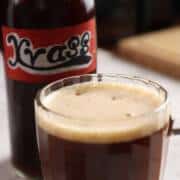
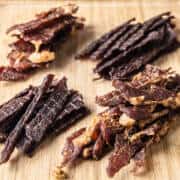
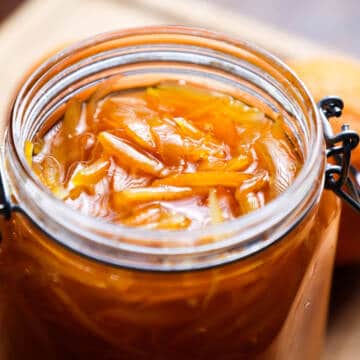
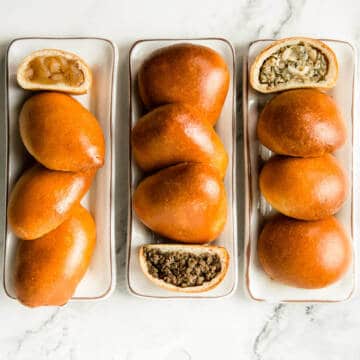

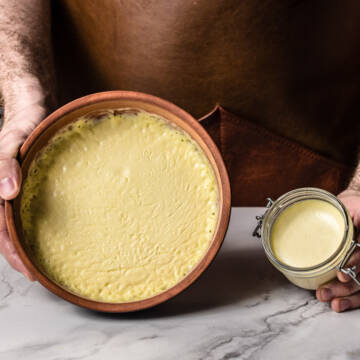
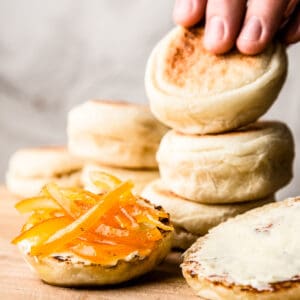
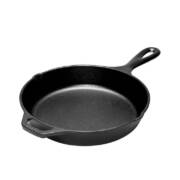
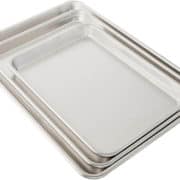
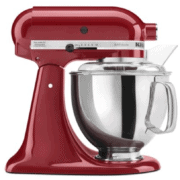
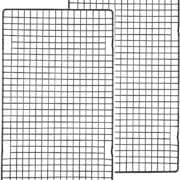
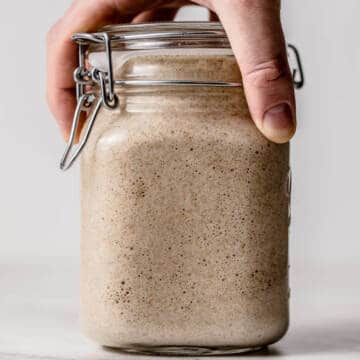
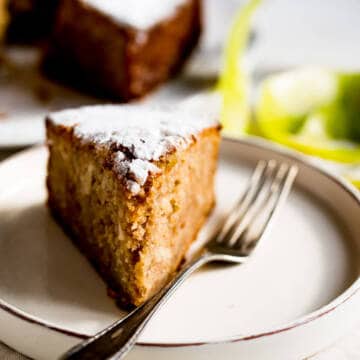

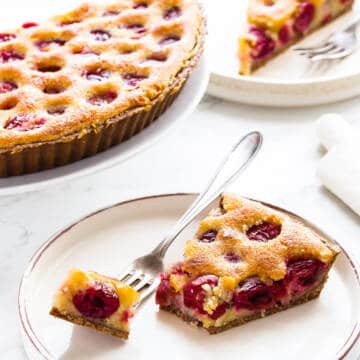
Suzanne
Almond breasts, that cranked me up, thanks for the recipe & the humor, keep it coming